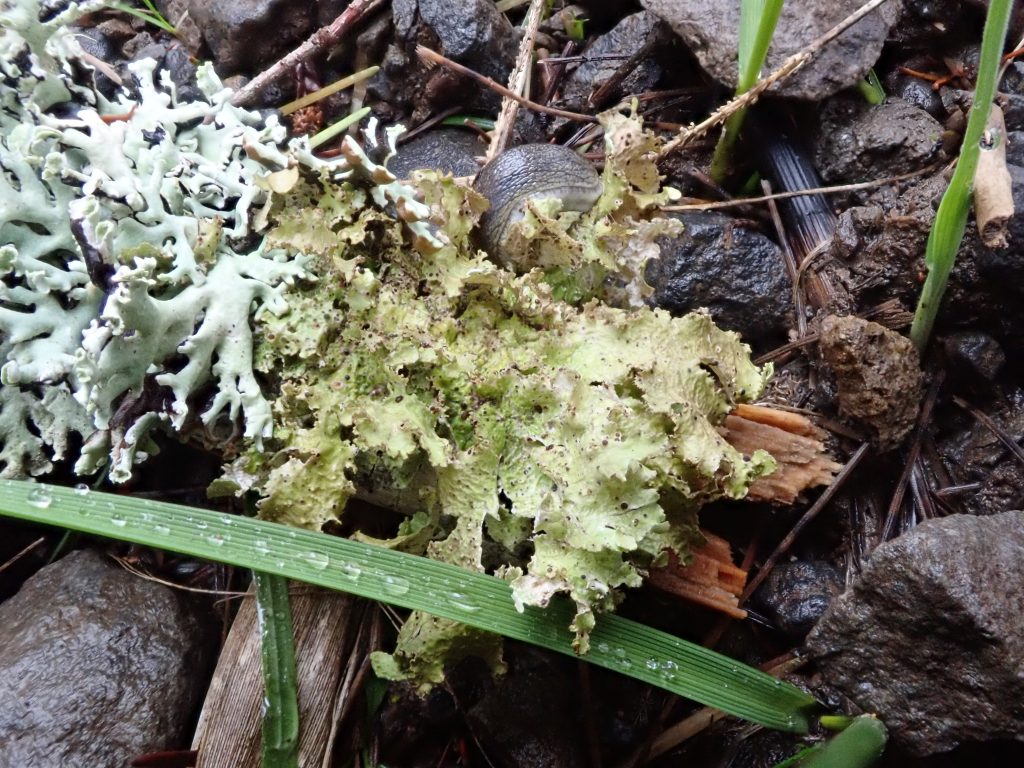
This lichen is also known as Ragbag, an evocative common name, the accuracy of which has led the bryologist David Wagner to nominate it as the ugliest lichen, and it certainly lacks the graceful symmetry of his beloved liverworts. The lichenologist Daphne Stone calls it Trickster because sometimes the thallus is smooth and lettuce-like, and sometimes the soredia and isidia are so clumped as to give it a coral-like appearance.
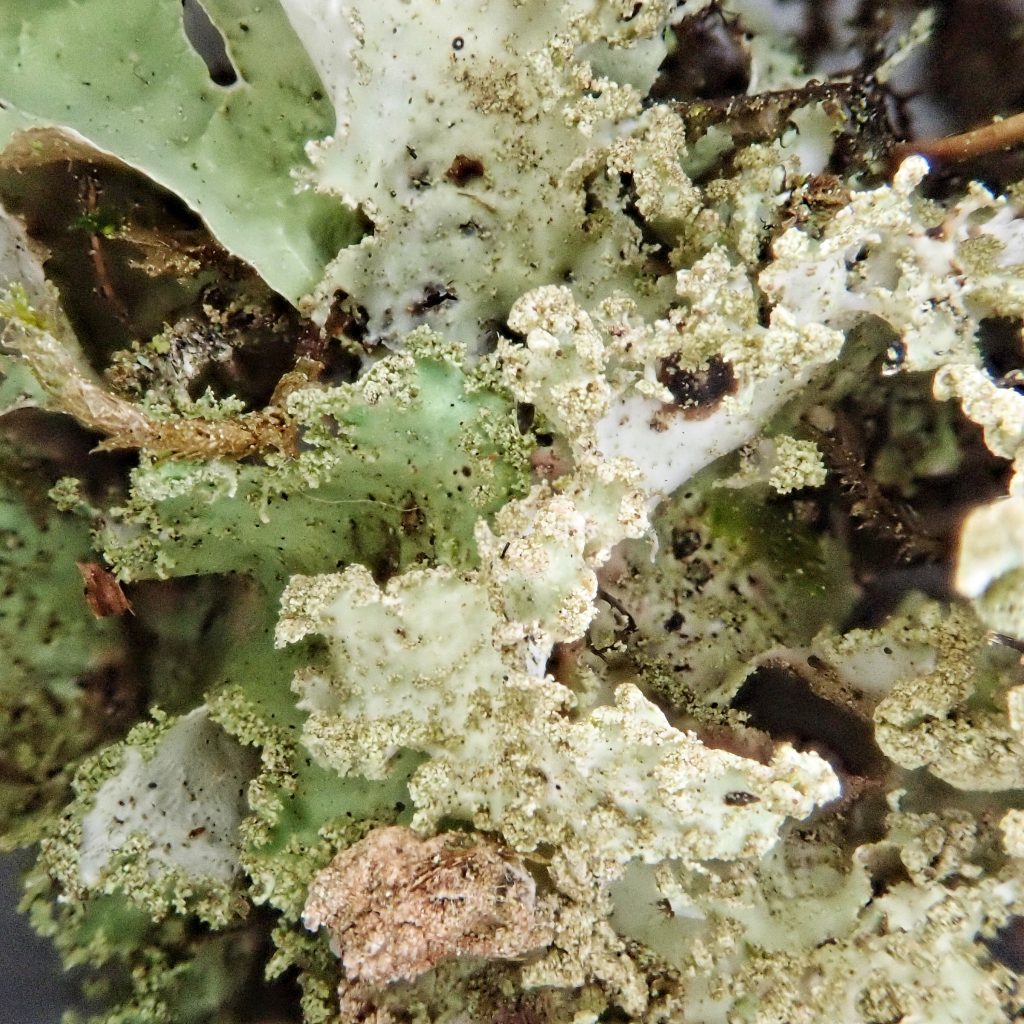
According to ‘Plants of the Pacific Northwest Coast’ (Pojar& Mackinnon); “Ragbag is a bewilderingly variable species. It also has a broad distribution, occurring on every continent except Antarctica. Both these facts suggest that the Ragbag may be of great evolutionary age. As the common name implies, some forms have a very tattered appearance. “
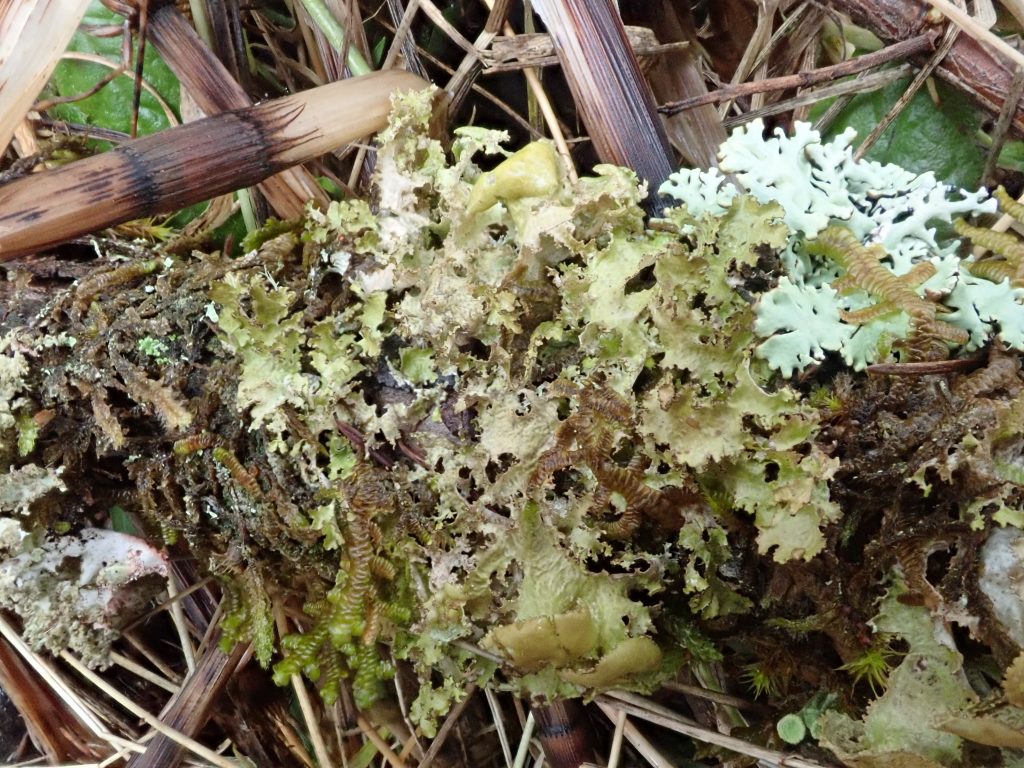
But the disheveled appearance, coupled with an overall dirty linen coloration, actually makes this a fairly easy lichen to identify. Though I have often found it growing on branches of trees near the ground, I most frequently encounter this lichen as blowdown, or on windfall branches, which leads me to conclude that it is more common in the canopy of trees than in the lower reaches.

Like almost every other lichen that I can think of, it is a useful bio monitor, and research is being done on its metabolites regarding their possible medical and horticultural uses.
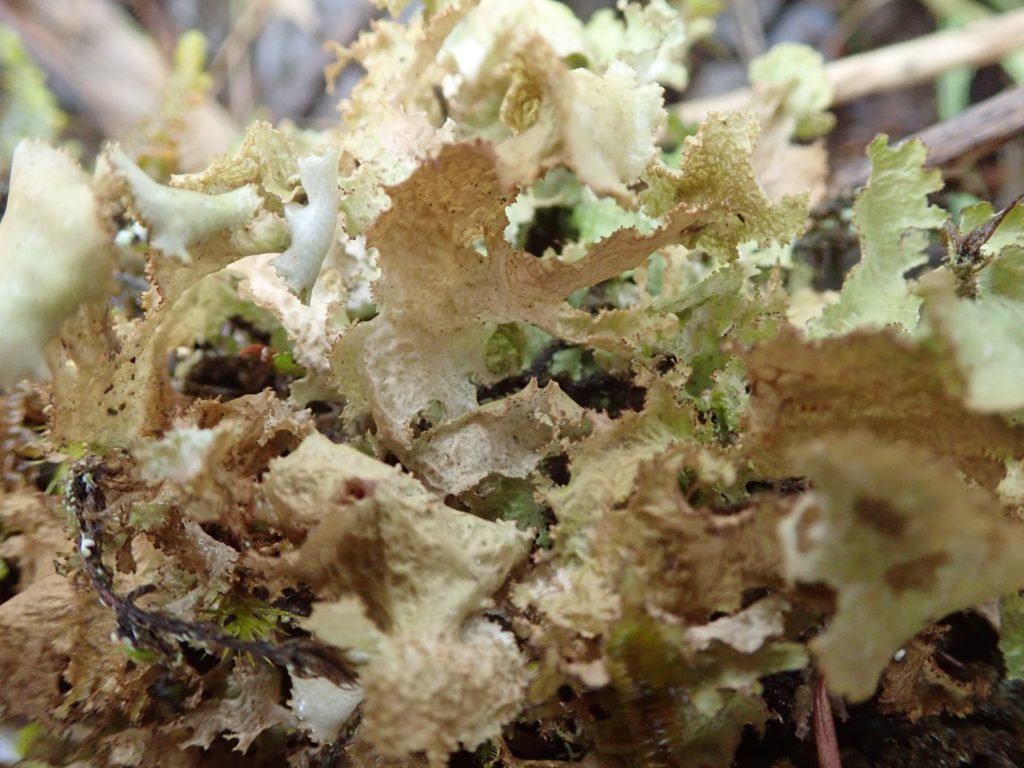
Description-Large disheveled looking foliose lichen, light grey to greyish green; Ventral surface some combination of brown, black, and white; with or without soredia and isidia, but also sometimes having coralline structures containing a profusion of both; apothecia rare; Cortex K+Y, medulla negative for reactions to K, C, KC, and P.
Similar species–P. norvegica has ridges on the dorsal surface and has isidia but not soredia. Esslingeriana idahoensis has apothecia but lacks soredia and isidia, and the ventral surface is all black.
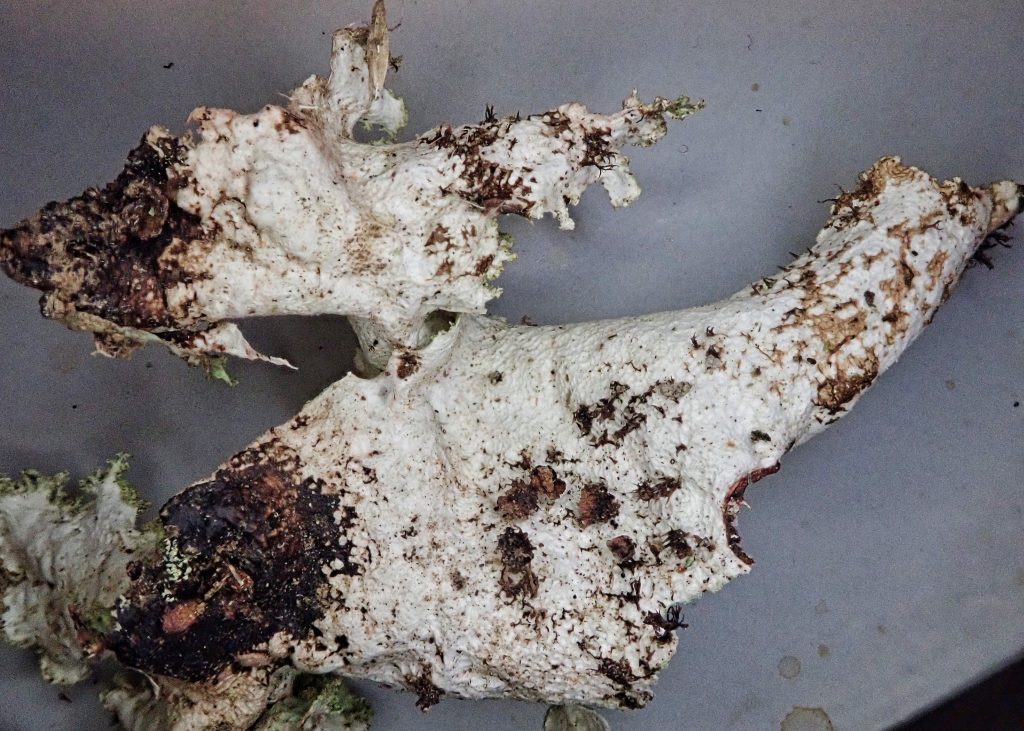
Habitat-Mesic to damp forests and woodlands up to subalpine; on conifers, sometimes on hardwoods, rarely on rock or high elevation soil
Range-Region wide in appropriate habitat
Etymology of names–Platismatia may be from the combination of the Greek word ‘platys’ meaning ‘flat or wide’ and the Latin ‘matia’ for a club or mace. This is often a fairly flat species, but I cannot ascertain what the combination may reference. The specific epithet glauca is from Latin and means sea green or bluish green, although it seems to get used a lot for pale grey, which would fit the common dorsal color of this lichen.
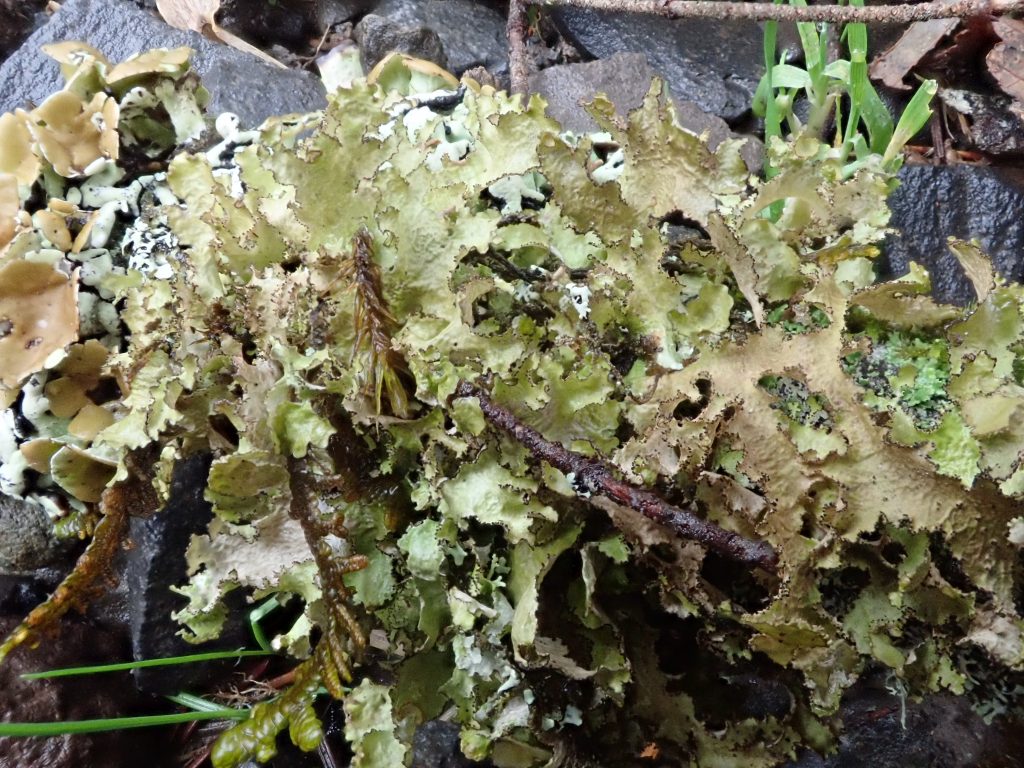
Platismatia glauca – Common Macrolichens of the Pacific Northwest
https://www.ncbi.nlm.nih.gov/pmc/articles/PMC4464406/
https://nph.onlinelibrary.wiley.com/doi/full/10.1111/j.1469-8137.2006.01754.x
http://linnet.geog.ubc.ca/Atlas/Atlas.aspx?sciname=Platismatia%20glauca
http://www.lichensmaritimes.org/index.php?task=fiche&lichen=450&lang=en
https://www.dnr.state.mn.us/rsg/profile.html?action=elementDetail&selectedElement=NLTEST7810
https://www.waysofenlichenment.net/lichens/Platismatia%20glauca
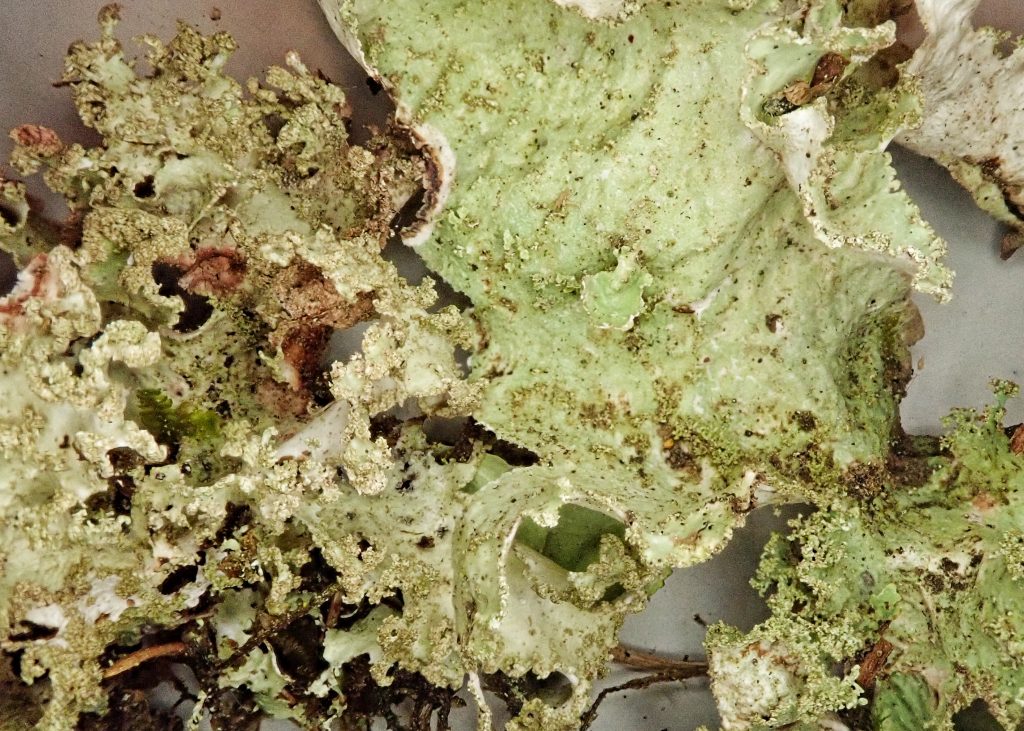
enjoyed learning about the ragbag lichen! Thankyou!